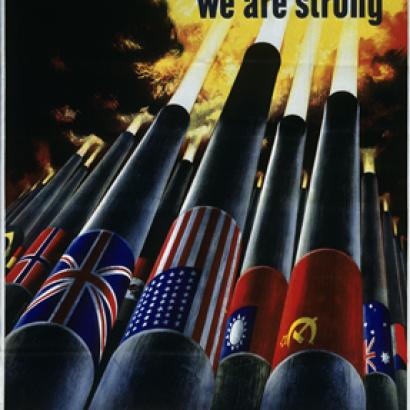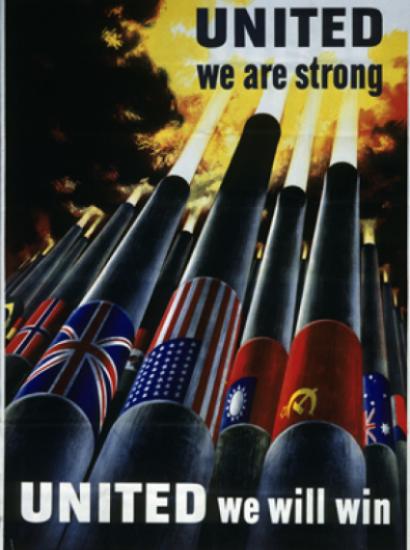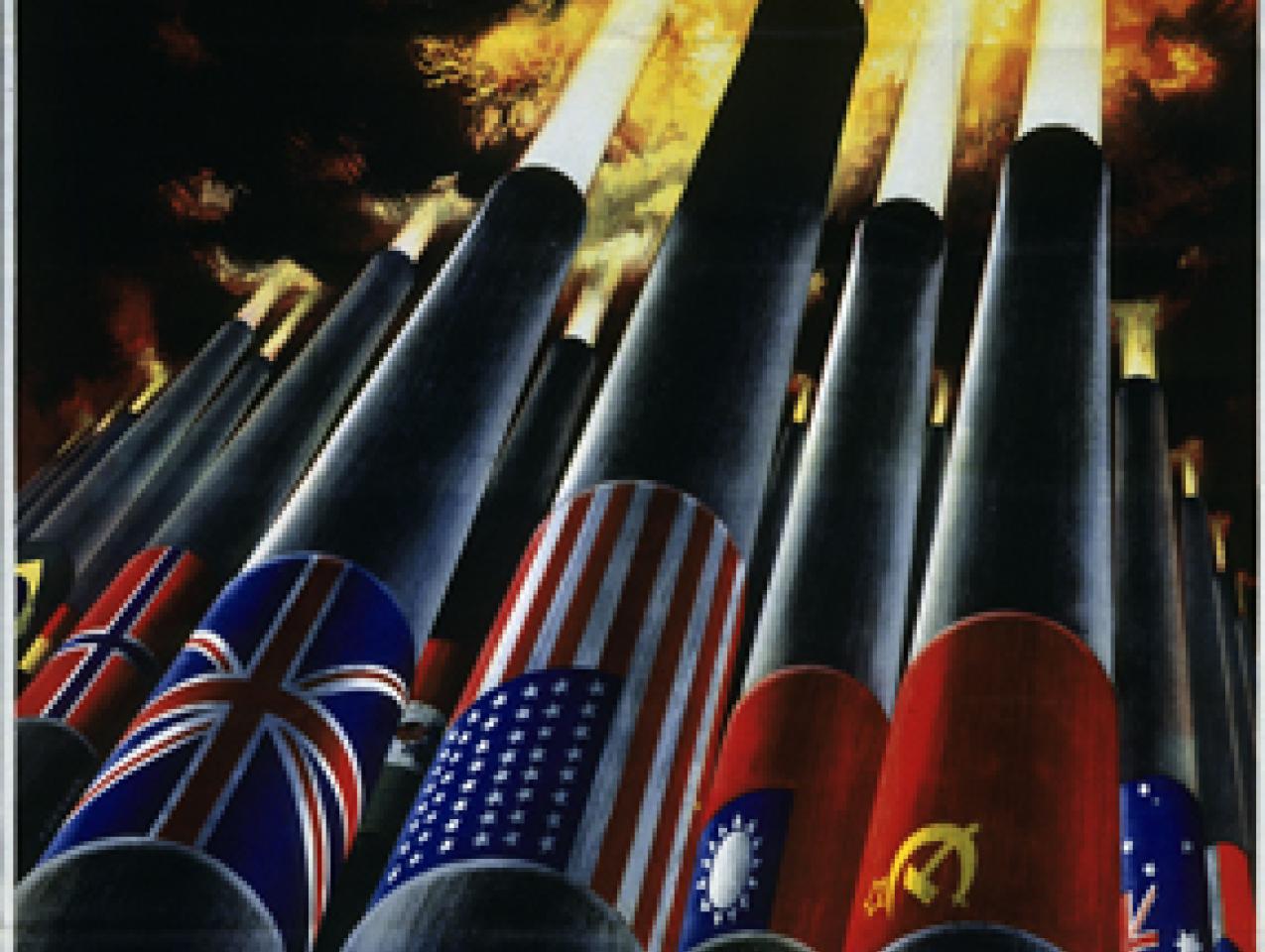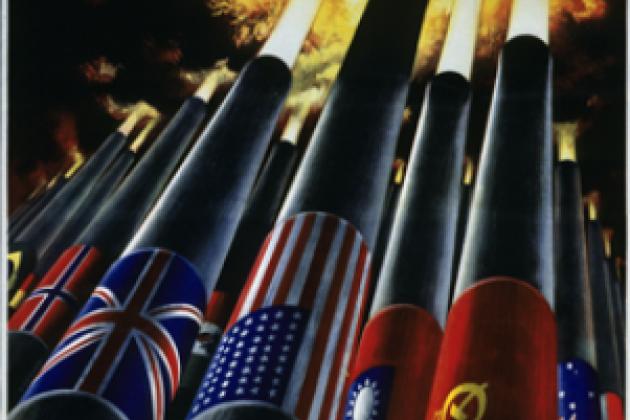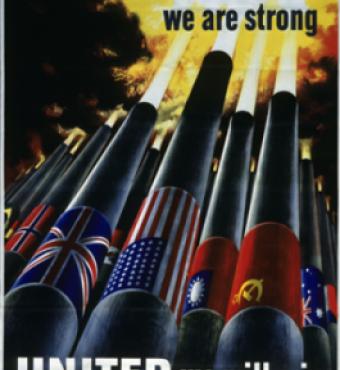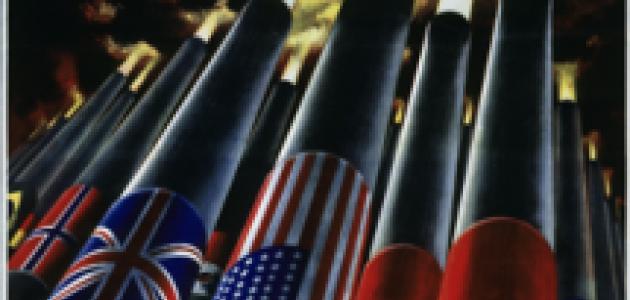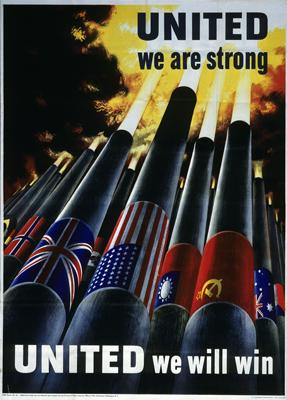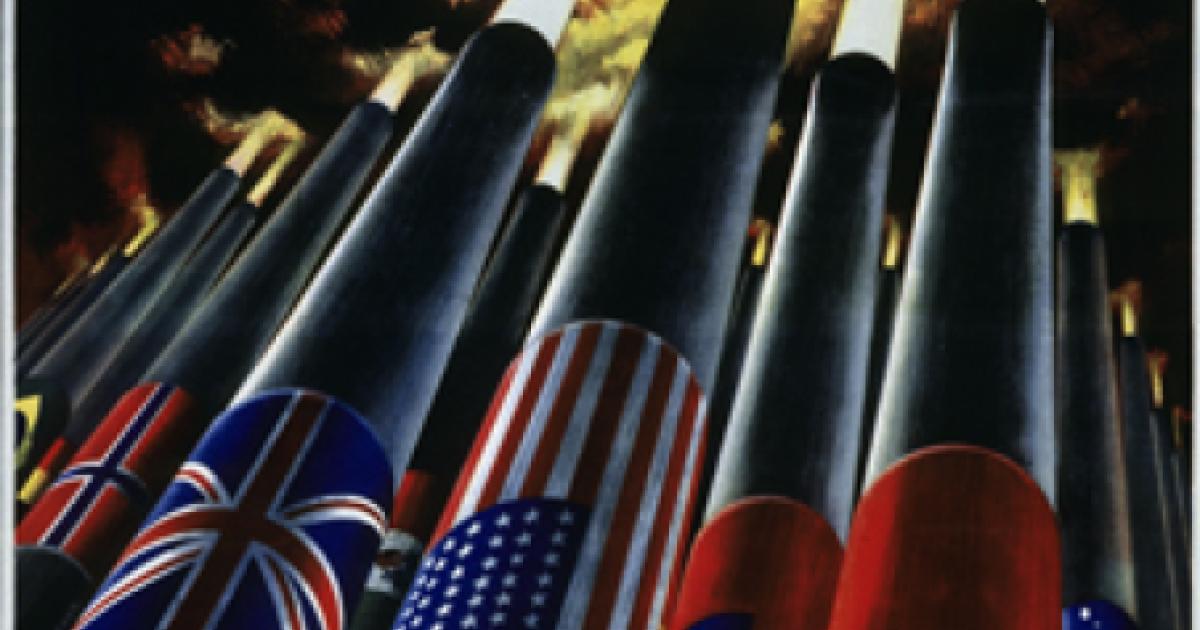- History
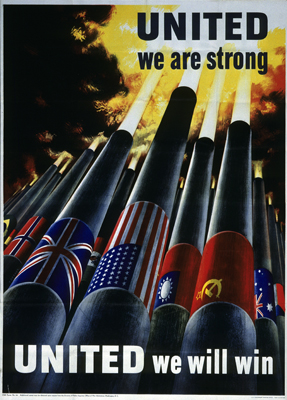
As Donald Trump assumes office as the nation’s 45th president, questions swirl regarding the strategic trajectory and alignment of the United States during his administration. Mr. Trump campaigned on a platform of putting “America First,” but the policy details of what exactly this means were, to put it mildly, lacking. Candidate Trump castigated America’s NATO allies for failing to live up to alliance commitments to spend at least 2 percent of their GDP on defense, hinted that Japan and South Korea would be better off with their own nuclear umbrellas, and, while vowing that his administration would crush ISIS quickly, stated that other problems in the Middle East, such as the Syrian Civil War, should be left to local actors to resolve or outsourced to Russia. He would bolster U.S. military power, but use it more sparingly. Whether this means the Trump administration will follow neo-isolationist, offshore balancing, conservative internationalist, or some other form of grand strategy remains to be seen. Given the uncertainty of what lies ahead in the next four or eight years, a review of the grand strategic alignment of the United States in the last two centuries is in order for clues as to what might lie ahead.
The first U.S. presidents avoided “entangling alliances,” as Thomas Jefferson put it, focusing instead on the security of the homeland and protection of American commerce overseas. In his farewell address to the American people, President George Washington stated America’s preferences clearly: “It is our true policy to steer clear of permanent alliances with any portion of the foreign world.” When President Thomas Jefferson deployed naval squadrons and Marines against Barbary pirates in the Mediterranean, he did so without the help of nearby European states. The nation’s small army was employed guarding ports and safeguarding westward expansion. The War of 1812, the “second war for American independence” in the eyes of many contemporary American observers, confirmed U.S. sovereignty in the homeland, but did not fundamentally change the nation’s grand strategic outlook.
The trajectory of U.S. grand strategy changed dramatically in 1823, when President James Monroe announced that the United States would not tolerate the expansion of colonial empires in the Western hemisphere. The Monroe Doctrine greatly expanded the concept of U.S. national security. The defense of the United States would not begin at the nation’s borders, but would rather encompass North, South, and Central America as well as the oceanic approaches to the Western Hemisphere. As presidential doctrines go, the Monroe Doctrine had a long run, governing U.S. foreign policy for more than a hundred years. But we should not give too much credit to U.S. pronouncements and power for keeping colonial powers at bay; Great Britain, France, the Netherlands, Spain, and Portugal were all too willing to cede the balance of power in the Western Hemisphere to the United States, a nation that seemed more focused on westward expansion than in impinging on European colonial possessions outside North America, most of which had gained their independence by 1823 in any case.
At the end of the 19th century the United States veered suddenly and unexpectedly onto the strategic path to overseas expansion. American public opinion, whipped to a fever pitch by yellow journalism (which has come back into vogue), demanded war in support of Cuban revolutionaries after the USS Maine blew up in Havana harbor, a tragedy blamed by many Americans on Spain but which was more likely due to an internal explosion. Overcoming mobilization and deployment challenges, the U.S. armed forces seized Cuba, Puerto Rico, and Guam, while the U.S. Navy Asiatic squadron under Commodore George Dewey destroyed the Spanish Pacific Fleet in the decidedly lopsided battle of Manila Bay. An army expeditionary force defeated the Spanish army in the Philippines and then spent a number of years battling Filipino and Moro guerrillas.
With no malice aforethought, the United States now found itself in possession of Caribbean and Pacific colonies (including the new territory of Hawaii, annexed in 1898), the defense of which would begin far from the Western Hemisphere. Doing so would require the acquisition of a powerful oceangoing navy, the first manifestation of which was the cruise of the “Great White Fleet” around the world from 1907 to 1909. The United States had emerged from its isolationist shell.
The great conflagration that erupted in Europe in 1914 eventually engulfed the United States, a rising industrial state with vast reserves of untapped military power. The initial concern of the Wilson administration was a familiar one to Americans—freedom of the seas. The sinking of the RMS Lusitania in May 1915 brought an ultimatum from Wilson to Imperial Germany to honor the rules of cruiser warfare or face American entry into the war. The Germans wisely backed off, only to resume unrestricted submarine warfare in 1917, gambling for victory before the presence of American troops on the Western Front could be felt. For the first time in its history, the United States was involved in a great power conflict outside the Western hemisphere, albeit as an “associated” power rather than as an ally to Great Britain and France.
Wilsonian grand strategy came to be associated with liberal internationalism—an effort by the world’s leading powers to prevent major power conflict, police international affairs, and advance humanitarianism through collective action. The Treaty of Versailles hardly accorded to Wilson’s “Fourteen Points,” which promised national self-determination, freedom of the seas, and open diplomacy, among other things. But the treaty did create a League of Nations, the foundational structure of collective security to ensure the Great War would be the last such conflict. The U.S. Congress, however, would have none of it. By a vote of 49 to 35 the Senate rejected the treaty and with it American participation in the League of Nations. The United States would return to its traditional isolationist stance. Given that U.S. troops were deployed in China and the Philippines, the term was not exactly accurate, but it did encapsulate the mindset of the American people, who believed they gained little from the Great War and wanted to put “American first.”
The retrenchment of American power in the interwar era was deep and significant. Although the nation maintained a strong navy that in 1938 included 15 battleships and 5 aircraft carriers, the U.S. Army shrank to just 174,000 troops (ranking it 17th in the world in terms of troop strength, just behind the army of Portugal), and the Army Air Corps in that year had few modern combat aircraft (the B-17 bomber and P-40 fighter were in the final stages of testing). As critically, Congress tied the president’s hands with legislation intended to keep the United States out of future great power conflicts. The Neutrality Acts prohibited the export of weapons and ammunition to nations at war, prohibited Americans from extending loans to belligerent nations, forbade U.S. citizens from traveling on belligerent ships, and prohibited American merchant ships from transporting arms to belligerents. The American people showed their support for isolationism through the creation of the America First Committee, dedicated to keeping the United States out of foreign wars. A major political force in the late 1930s, the America First Committee boasted 800,000 members in 450 chapters.
“America first,” at least as embodied in the grand strategy of the interwar era, worked only as long as there remained a balance of great powers overseas. Isolationism as a grand strategic framework became much less tenable after the fall of France in June 1940. Great Britain also appeared to be on the ropes, which raised the possibility of German domination of the European continent. Given the expansionist philosophy of the Nazi regime, that prospect posed an existential threat to the United States. President Franklin D. Roosevelt and Congress responded by passing the Two Ocean Navy Act, mobilizing the National Guard, and—a first in American history—enacting a peacetime draft. Roosevelt sent arms to Great Britain, traded destroyers for bases, and put the U.S. Navy on a collision course with the Kriegsmarine in the Atlantic. Admiral Harold Stark’s Plan Dog and subsequent American-British-Canadian staff discussions paved the way for the adoption of Rainbow 5, a war plan that envisioned the United States fighting as an ally of Great Britain (and later the Soviet Union) in both Europe and Asia. The Japanese attack on Pearl Harbor on December 7, 1941, was only the final dagger in the heart of a grand strategy that no longer accorded with America’s national security interests. Once again—and this time seemingly for good—the defense of the United States would begin with the defense of America’s overseas allies.
The destruction of the Axis powers laid the foundation for a more stable post-war order, this time with the United States willing and able to participate in its creation and maintenance. Having engaged in two great world wars in just a quarter century, U.S. political and military leaders embraced collective security and the defense of allies made possible by the visible commitment of forward deployed troops in Europe and Asia. This liberal international order, along with its policies and institutions such as the Marshall Plan, the World Bank, the International Monetary Fund, the North Atlantic Treaty Organization, and defense treaties with Japan and South Korea, has lasted for more than seventy years. Republican and Democratic administrations over that period would argue about specifics of policies underlying liberal internationalism—containment, engagement, NATO enlargement, and so forth—but there was no disagreement over the ends of policy. The United States would buttress the international order from which it profited greatly with its vast reserves of diplomatic, informational, economic, financial, and military power.
For ten years after the collapse of the Soviet Union in 1991, it seemed that the United States would exert its authority through an international system in which it held the preponderance of power. The unipolar moment was fleeting. The terror attacks on the U.S. homeland on September 11, 2001, began the process by which America’s domination ended. The administration of George W. Bush committed the nation to an expansive war on terror, including campaigns in Afghanistan and Iraq in which it collapsed the Taliban and Ba’athist regimes and enmeshed U.S. armed forces in long-term military operations to stabilize their successors. Neither war ended quickly or successfully, and their multi-trillion-dollar price tags, along with the deaths and wounding of thousands of service members, soured the American people on continued service as the guarantor of the international system.
The rise of China, a revanchist Russia, allies that have failed to live up to treaty obligations in terms of defense spending, and the lingering effects of a crippling recession have all contributed to a malaise that has affected the American psyche. The Obama administration has exacerbated these factors by its use and misuse of American power: a premature withdrawal of U.S. forces from Iraq, eliminating the leverage they provided over the conduct of the Iraqi government and thereby enabling the rise of ISIS; using force against the regime of strongman Muammar Qaddafi to cause its collapse (and his murder) without thought as to how to stabilize Libya in the aftermath of conflict; announcing an ill-conceived “red line” over the use of chemical munitions in Syria and then failing to enforce it; failing to support the Syrian rebellion in its early stages when the creation of a moderate, secular front against Bashar al-Assad was still possible; and banking on stabilizing the Middle East by negotiating a nuclear accord with the ayatollahs in Tehran, an agreement whose benefits have reenergized the Iranian economy without moderating Iranian conduct. Little wonder why the American people were ready to vote for change when the presidential election rolled around in 2016.
What type of grand strategy the Trump administration will adopt going forward is anyone’s guess, but it will not be more of the same. Mr. Trump has promised to put “America first,” which means jettisoning supposed deadbeat allies who freeload off of American power, picking America’s fights more judiciously, and employing overwhelming force when sending American troops into battle. Given the president’s fascination with Russian President Vladimir Putin, it seems quite likely that the U.S.-Russian relationship will be recast, with Putin benefiting from the lifting of sanctions (and thereby acknowledging the seizure of Crimea as a fait accompli) and a free hand in Syria (which will bolster Russian power but not end the civil war there). What the United States would get out of this policy is an open question; perhaps nothing more than Putin’s goodwill—thin gruel when it comes to issues that matter. On the other hand, if such a policy does not impel NATO allies to raise their levels of defense spending through fear of the Russian bear, then perhaps nothing will. The president has already shown his willingness to challenge China on issues of longstanding import, such as the “one China” policy vis-à-vis Taiwan. He has promised to renegotiate America’s trade relationships to bring jobs back home, to substantially limit Muslim immigration into the United States, and to build a wall along the U.S. southern border with Mexico.
Taken together, these policies spell the end of the liberal international order as we have known it since the end of World War II. The United States is returning its grand strategic posture to an earlier time, when America eschewed allies and presidents talked softly and carried big sticks. Those policies, one might note, ended with the United States embroiled in two world wars. It remains to be seen whether they will be more successful this time around.







